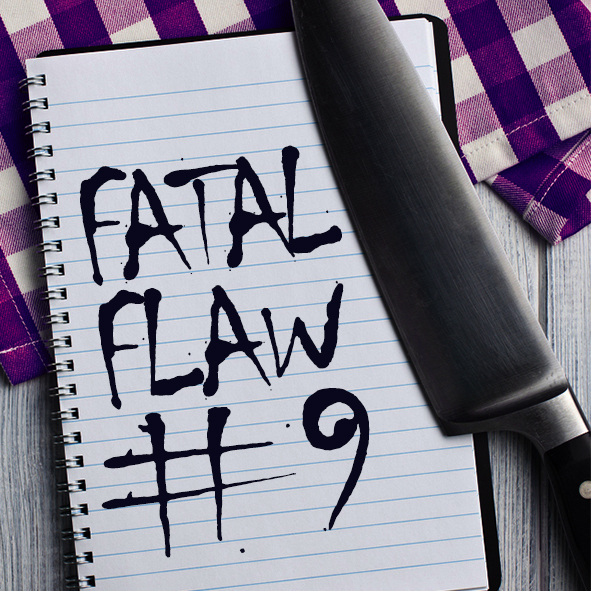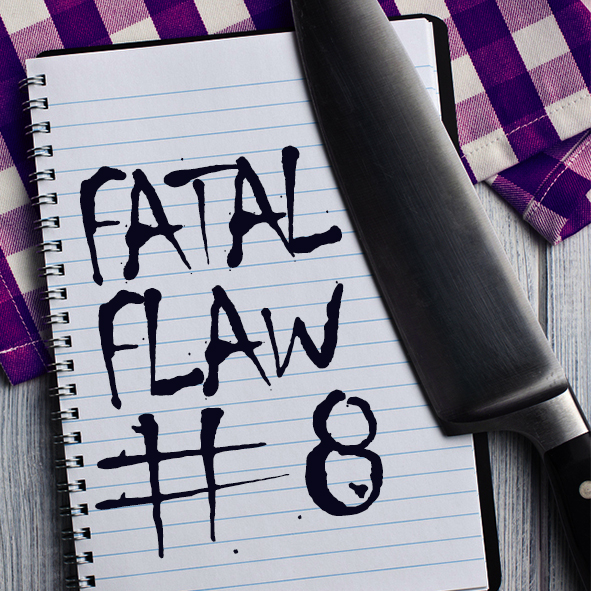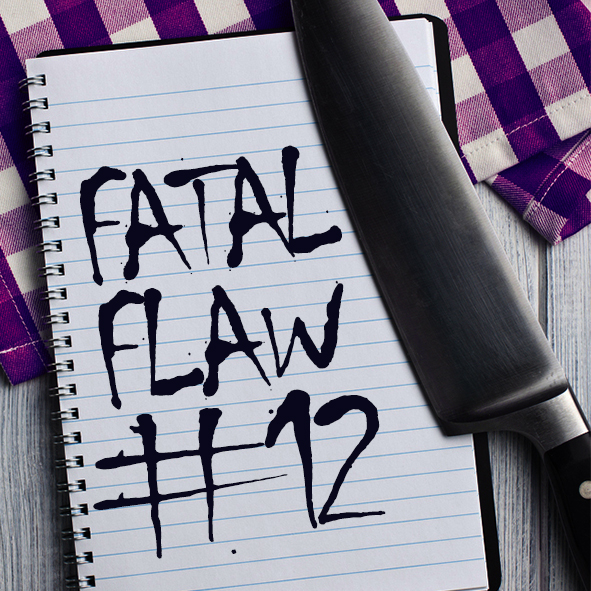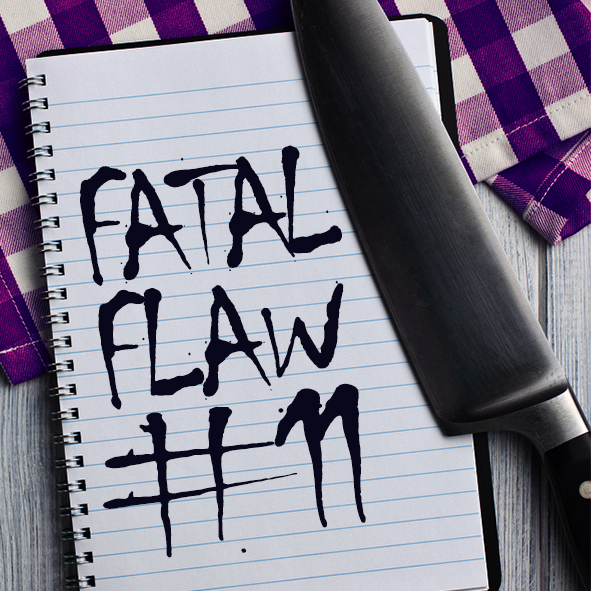Don’t Jump to Conclusions: The Perils of “Underwriting”
This month our editors are tackling Fatal Flaw #9—Underwriting. Too often necessary information is left out of a scene, leaving readers scratching their heads. This may pertain to narrative, dialog, setting—every and any component found in fiction. Today editor Linda Clare introduces another Rule of Three that writers can use to ensure the process of reaction is fully portrayed and believable.
Writers hear a lot about overwriting—tighten, tighten, tighten. We’re advised: Show, don’t tell. Act out scenes.
Yet, many writers “underwrite” in places where readers want to experience the steps characters make when they change. Underwriting involves a “jumping to conclusions” mentality—something big happens in the story, but the protagonist simply responds without showing the process of decision.
Don’t Skip Steps in the Process
For instance, your eight year-old Main Character doesn’t like broccoli. Hates broccoli. Would rather starve than eat broccoli. Then Mom says broccoli is good for you. MC suddenly gets excited and scarfs down that pile of green cruciferous veggies. What’s wrong here?
If you guessed that no kid would change her mind about broccoli just because someone says it’s good for her, you’re right. Mom would probably need to work a little harder to see the plate cleaned.
In order to write this scene authentically, we need to show the stages of yes. That is, Mom is going to appeal to the kid by upping the ante on her. If Mom says broccoli’s good for you, any self-respecting kid would still keep her mouth clamped shut.
But what if Mom ups the ante by saying unless kid eats broccoli, she won’t get dessert? In my house, that kid will want to know what’s for dessert before she agrees. Day-old vanilla pudding would not sway a broccoli-hating kid.
OK, now Mom goes for the cherry on top. She asks, “What about a trip to Dairy Queen?” Yes! Kid might hold her nose (or cheat and feed the dog), but she agrees to eat broccoli.
The Rule of Three for Process
If you’ve ever had to talk someone into doing something, you know that it often happens in stages. In fiction, it often happens in threes.
You can use the Rule of Three to show the process your character goes through to reach a decision. Caveat: In real life, we often must work much harder than three times, but we don’t want the reader to get bored or give up, so we give the illusion that the character is wearing down gradually. Illustrate three, but summarize if the process takes longer. For example: “Mom tried to get her daughter to eat broccoli night after night.”
Applying the Rule of Three might look like this: The first request for a change of mind, emotion, or action gets instant rebuff, a knee-jerk reaction. The second time, a character weighs the possibilities (dilemma) but still clings to her first response. Third time shows not only the decision to say yes or no to the request but also the emotional, mental, or physical reason for the decision.
Now let’s look at a before and after example.
Before:
Jack hung his head. He’d never get Patty Ann Mason to go to the prom with someone like him. Without a job, he’d never afford all the fancy stuff a girl like Patty required. Limo service, dinner at some fancy restaurant, cool after-party—all that was beyond him. Jack sighed. He was a loser. He’d always be a loser.
Just then, Katie Hudson, the ugliest girl in the whole school, sat down beside Jack. She peered through her coke-bottle glasses. “Hi Jack. Got a date for the prom yet?”
Jack looked up. “No.” Patty Ann was as good as gone.
Katie, grinned, her braces gleaming in the noonday sun. “Why don’t you take me?”
Jack shrugged. “OK. I hope you don’t mind biking to the dance in your formal.”
Katie said, “And I hope you don’t mind if my formal’s made out of Saran Wrap.”
“I guess it’s a date then?” He stood. “Walk you to class?” Losers had to stick together after all.
After:
Jack hung his head. He’d never get Patty Ann Mason to go to the prom with someone like him. Without a job, he’d never afford all the fancy stuff a girl like Patty required. Limo service, dinner at some fancy restaurant, cool after-party—all that was beyond him. Jack sighed. He was a loser. He’d always be a loser.
Just then, Katie Hudson, the ugliest girl in the whole school, sat down beside Jack. She peered through her coke-bottle glasses. “Hi Jack. Got a date for the prom yet?”
Jack hid the urge to barf. “Maybe. Who wants to know?” Ugly Katie was probably an alien or something. And where’d she get find such a hideous outfit?
“I don’t believe you.” Katie grinned, her braces gleaming in the noonday sun. “Why don’t you take me?”
Jack glared. “Sure, if you don’t mind biking to the dance in your formal.”
“So that’s a no?”
“Not only no but heck no.”
Katie scooted closer. “Did you hear? Patty Ann Mason’s going with Derek.”
Jack groaned.
“Come, on. We’ll have fun, you and I. What if I told you my formal’s made out of Saran Wrap?” Katie’s beady eyes shone behind her thick lenses. “It’s strapless and see-through.”
Jack studied her figure—not half bad. “I don’t know.” He shifted on the bench.
“Look.” Katie’s smile faded. “I know I’m no Patty Ann Mason. But I’ll pay for everything—limo, dinner, after-party—the works. You don’t even have to dance with me. What do you say?”
“OK, OK.” Jack would ask Katie to lay off the garlic on prom night. “It’s a date then.” He stood. “Walk you to class?” Losers had to stick together, after all.
The Before example doesn’t show us how Jack came to the conclusion that going to prom with Katie was something he would do. In the After version, we see Katie putting more pressure on Jack, chiseling away at his defenses. When she offers the solution to the scene’s main problem—Jack’s lack of money to pay for the prom—it feels natural for him to agree, however reluctantly.
A good rule to follow: the more important the scene (to the overall story), the slower the writer can show a change of heart. In scenes where the outcome isn’t as critical, you can show a much faster transformation. But a decision arrived at with little or no transitional stages will likely be seen by readers as inconsequential.
A word about drafts: If you expand your scene to show these stages, you may get it too long or not long enough. Use subsequent drafts to refine this technique. I think it’s easier to trim than to add, so with the first try at showing the transitions, don’t hold back. You can fine-tune the scene later.
Conclusion
To avoid underwriting, the stages of yes or no must arise from a character’s logical sequence of thoughts, emotions, or actions. These stages are similar to the sequel of a scene: reaction, dilemma, decision.
Weigh the scene’s importance against the overall story goal, and use the Rule of Three to illustrate the stages by which a character decides on something. By avoiding underwriting in scenes, you will increase readers’ satisfaction and belief in the story.
Your Turn:
In your work-in-progress, are there scenes where you might add thought, emotion or action to arrive at the character’s next important decision? How will you employ the Rule of Three to help satisfy the reader’s need to see the decision-making process?










Good comments. Helpful.
JB,
Thanks. Is your fiction as spare as your comment? Just kidding. For some it’s a challenge to write in brief; for others it’s hard to get enough words down.
Keep Writing!
Linda
To answer you question if my brief comment is a reflection of my writing, I can only say,
“Yep.”
Best to you
Thanks for the helpful thoughts and especially the example. I shared this with my critique partner and we both used it with scene problems we were working on. I’m saving this post in my writer’s notebook.
Thanks, Dana, we are compiling the year-long course with tons of bonus material with the aim to release the book (print and ebook) Dec. 1. So you won’t need to print out and save the posts!
Shame, shame. Why didn’t you mention this before? With that book, I can discard my three binders filled with outstanding posts. (Please know that I’m just kidding about the “shames.” I have two of your books already.)